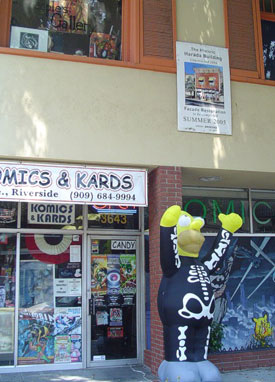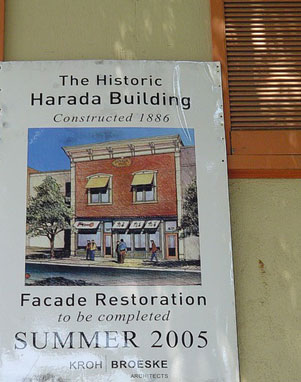The Harada House
The Harada House on Lemon Street is a National Historic Landmark in one of the city's oldest residential neighborhoods.

In 1915-17, Riverside became the stage for a challenge to the Alien Land Law when Issei (first-generation, immigrant Japanese) restaurant owner Jukichi Harada bought a home in downtown Riverside in his Nisei (second generation, American-born) children's names. His new neighbors- mostly White- resisted his presence, first trying to buy him out and then taking him to court.
The case went all the way to the California Superior Court as The People of the State of California vs Jukichi Harada and was eventually decided in favor of the Haradas. The Harada house (built in 1884) still stands at 3356 Lemon Street and was designated a National Historic Landmark (by the National Park Service and the U.S. Department of the Interior) in 1990.

Ironically, the Harada family was evacuated to the Japanese American internment camps in 1942 along with the rest of Riverside's Japanese American community. Jukichi Harada and his wife Ken both died in Topaz Relocation Center, Utah (Ken in 1943 and Jukichi in 1944).

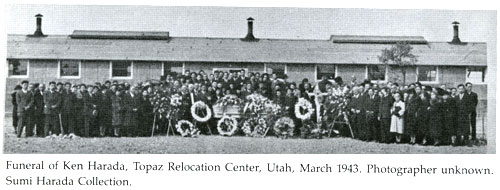
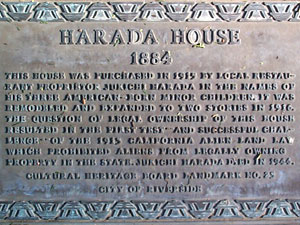
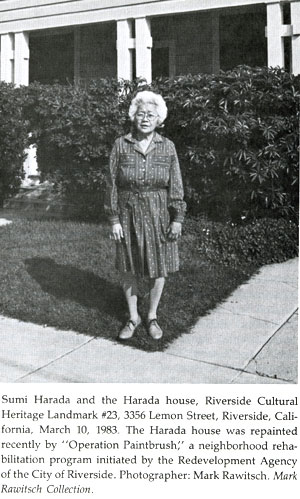
Their daughter Sumi Harada returned to Riverside and lived in the house on Lemon Street until the last few years of her life. She commanded wide respect in Riverside, both within and outside the Japanese American community, and was known as a person of strong principles and opinions.
The Harada House is listed on the National Park Service website as a site that is central to the history of the Japanese in California .

The story of the Harada family is told by Mark Rawitsch in No Other Place: Japanese American Pioneers in a Southern California Neighborhood (1983), a book now out of print but available in local libraries. Rawitsch did extensive archival and oral history research and some of the photos featured here are from his book (and originally from the Harada family).
A Lesson in How to Remember Local Asian American History

Jukichi Harada ran a restaurant at 3643 University Avenue in Riverside. The Haradas lived upstairs in this building until they moved to Lemon Street. Built in 1886, this building is now owned by local businessman Andrew Melendrez. It houses a comic book store downstairs (where the restaurant once stood) and The People's Gallery, a non-profit art gallery directed by local artist Marian Semic.

A longtime Riversider, Semic is fascinated by local history and has made it her mission to ensure that the building's history is remembered. She created a large painting based on a Harada family portrait that hangs on the side of the building, overlooking Riverside's pedestrian mall.

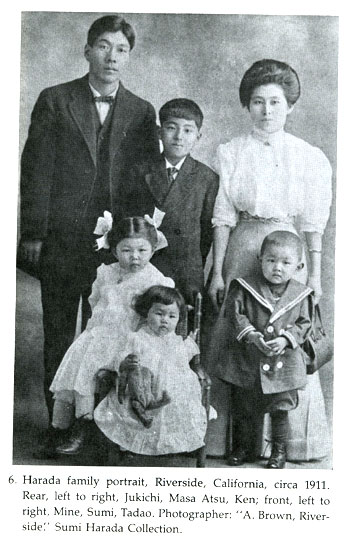

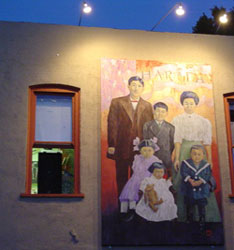
She mentors Vietnamese American painter Mike Nguyen, who graduated from La Sierra High School in 2004 and now attends the Riverside Community College. Mike's large scale painting (his first) is an interpretation of another Harada family portrait. He completed it in 2004 during the months when Semic was heading up an initiative to have the building designated a National Historic Landmark.
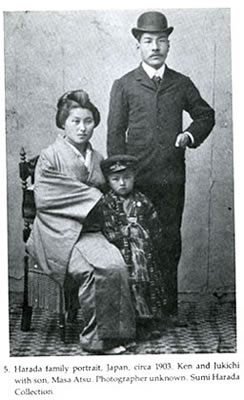 |
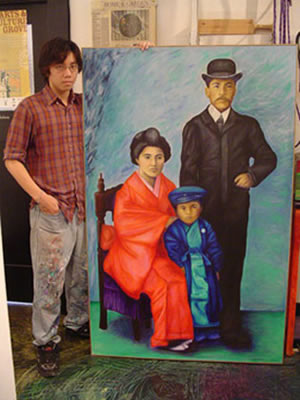 |
The City Council did not support the proposal, arguing that the structure had undergone renovations that compromised its original characteristics. (Council member Dom Betro , who represents downtown Riverside, was the lone vote in support of the proposal.) Working with owner Melendrez, Semic has helped to organize a restoration of the façade that began in 2005. She plans to request National Historic Landmark status again, once the restoration is complete.

